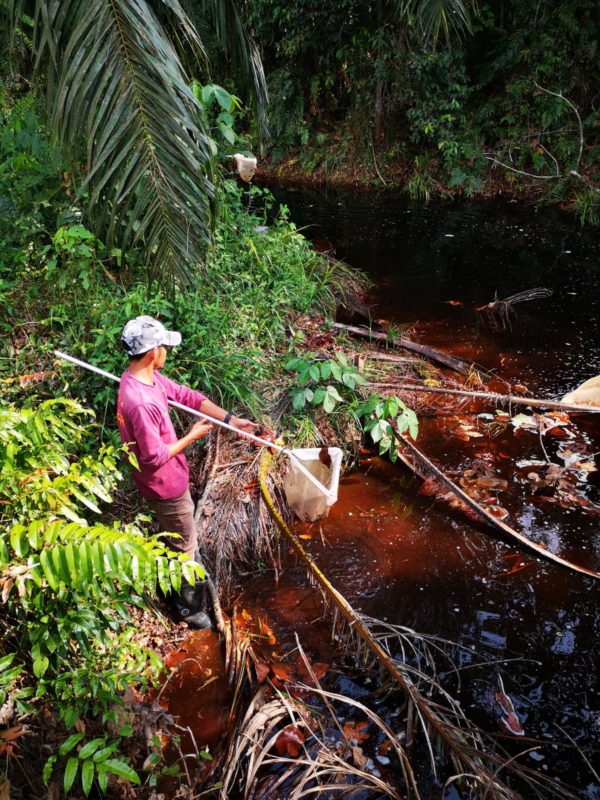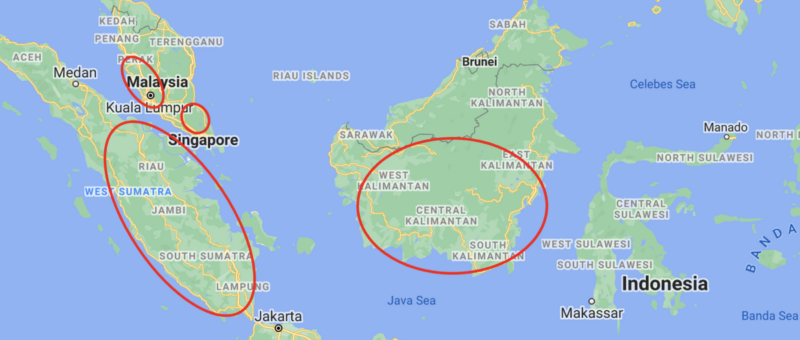Saving Southeast Asia’s peat swamp fishes

© Parosphromenus Project
The images of forest fires and land clearance in Southeast Asia are now all too familiar to most of us. Disturbing images of orangutans desperately searching for shelter in a burnt and barren landscape have been well covered in the news and social media, and many people are by now well aware of the destructive monoculture plantations that spring up with devastating regularity.
But the loss of the once vast peat swamp forests is not only impacting the orangutans and tigers of Malaysia and Indonesia, but also a highly diverse community of fishes. These blackwater fishes, such as bettas and gouramis, are often beautiful and highly regarded by the aquarium trade but, due to habitat loss, they are now one of the most threatened groups of fishes in Southeast Asia.
SHOAL is helping to protect some of the last remaining refuges of the peat swamp forest, giving renewed hope to the survival of entire species.
The projects
During 2020, SHOAL, supported by Singapore Zoo (Wildlife Reserves Singapore) worked with Malaysian experts from the Global Environment Centre, Monash University Malaysia, Universiti Malaysia Terenganu, and the Malaysian government, along with the Parosphromenus Project to develop a conservation plan for the Malaysian peat swamps. This is one of the first fish species-focused action plans to be created in Malaysia.
Projects for the top three priorities have been initiated, including those focussing on parosphromenus fishes in Johor state, threated species in the acidic blackwaters of the North Selangor peat swamp forest, and species including the tiny paedocypris in Pondok Tanjung. Shoal is now working with partners to undertake a similar process for peat swamp fishes in Kalimantan and Sumatra.
Location
The programme of work will cover a number of regions in Southeast Asia, including Johor state, North Selangor and Pondok Tanjung mentioned above, as well as regions in Kalimantan and Sumatra.

Activities supported by SHOAL
1. Action planning for Kalimantan and Sumatra, Indonesia
Based on the successful model for planning in Malaysia, actions plans for Kalimantan and Sumatra in Indonesia need to be created. As in Malaysia, this process will bring together experts and partners to agree on the most important species, locations, actions and policies required to secure these fishes from extinction as soon as possible.
2. Supporting fish conservation in the three most immediately critical locations in Peninsular Malaysia (North Selangor peat swamp forests, Tanjung Pondok and Johor)
Three locations were identified as requiring immediate protection, as they hold the last remaining populations of critically endangered endemic fishes, and are under threat of loss without urgent action. The local partners will work with local stakeholders to identify the best methods for protection and long-term sustainability.
3. Surveys of Southeast Pahang peat swamp forest
The Southeast Pahang peat swamp forest is the largest peat swamp forest in Peninsular Malaysia but is relatively unexplored and therefore not well understood. Because this is the largest remaining peat swamp forest, it is both likely to be vital to many species, and possibly the best opportunity to secure a robust representation of this habitat. Surveys are urgently needed to inform immediate conservation action.
4. Detailed assessment of peat swamps for fish conservation in Sabah and Sarawak
Relatively little is known about the conservation status of peat swamps in the Sabah and Sarawak states of Malaysian Borneo. There is no doubt that these peat swamps are of global conservation priority for fish conservation, but there is insufficient data and information to prioritise conservation action. Immediate assessments are required to facilitate action in the near future
Some of the species
Paedocypris progenetica – the world’s smallest fish, discovered in Sumatra in 2005.
Parosphromenus alfredi – a critically endangered species, confined to only a few locations in Johor, Malaysia.
Betta livida – a very rare member of this famous genus of beautiful, highly sought-after fishes.

